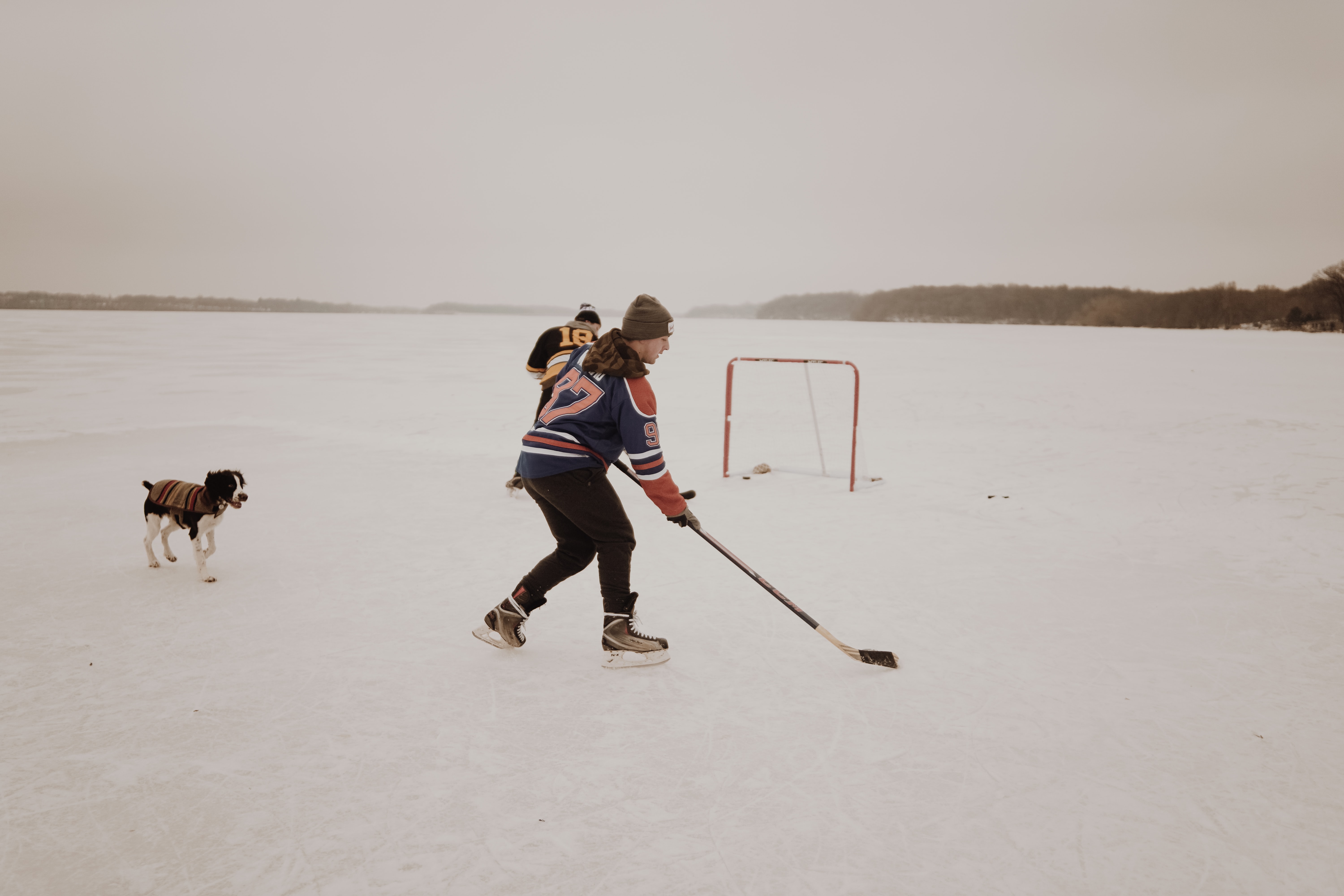
When injuries do occur, it is important to consult with a rehabilitation specialist as soon as possible to develop a plan of treatment that can help guide in recovery, said Williams.
Common hockey injuries can have their severity reduced, or even be prevented, with proper warm-up and training programs, according to a University of Alberta physiotherapist who works for the Edmonton Oilers.
"The explosive and physical nature of hockey results in a variety of injury types, ranging from direct trauma to repetitive strains," explained Ryan Williams, who works at the U of A's Glen Sather Sports Medicine Clinic .
"The skating position causes repeated load on the muscles around the hips, abdominal muscles and lower back. Muscle strains commonly affect the groin, hip flexors and low back stabilizers."
While injuries can often be inevitable, practicing proper warm-up stretches and exercises before a game, as well as introducing key movements into everyday workout programs, can help prevent some of the more mild muscle and ligament strains and sprains.
"You can prevent soft tissue injuries resulting from repetitive strains by optimizing the mobility, muscle control and strength in some important areas. The key areas to target in hockey players are the spine, hips and shoulders. A program to address this can easily be implemented as a regular warm-up routine or integrated into an existing training regimen," said Williams, who has been working with the Oilers since 2011.
While overuse issues can often be easily addressed, injuries that result from trauma can be difficult to anticipate, making player safety practices a top priority during games.
"There are some things that can help to reduce the risk," said Williams.
"Properly fitted equipment that is maintained and in good condition can help minimize the effects of trauma from contact with players, boards, sticks or pucks. Parents, coaches and players should all work together to identify any equipment-related issues.
"Further injury risk can be mitigated by having players enjoy sports at their appropriate level. For example, minor hockey organizations work together with coaches and parents to ensure kids are playing in categories that best fit their skill level."
When injuries do occur, it is important to consult with a rehabilitation specialist as soon as possible to develop a plan of treatment that can help guide in recovery, said Williams.
"At the onset of an injury, a physiotherapist can assess the problem and develop a treatment plan that fits with the patient. In the instance of severe injuries, such as fractures, joint dislocations and concussions, they may recommend seeing a medical doctor to fully assess the extent of an injury.
Williams said nearly all injuries respond well to an active physiotherapy program.
"These programs might include specific exercises, modifications to existing workout programs, general conditioning, manual therapy and educating the athlete on how they can optimize recovery and prevention."
Williams said that while the patient is the one who may feel as though they are ready to return to play, it is really a team effort when getting players back on the ice.
"Once a player has passed through all steps and feels psychologically ready to play, it is necessary that communication occurs between the athlete, parents, coaches and therapist to ensure all parties are supportive of the decision to move forward.
"No two injuries are the same, given variances in the severity and number of structures affected," explained Williams. "As a result, the recovery timelines are often wide-ranging from a few days to a number of months. It's important that we all work together to make sure we're doing what's right for the patient so they can be successful in the long run."
In short, Williams recommends the following for hockey players to prevent injuries:
- Practice proper warm-up stretches and exercises before a game.
- Introduce key movements into everyday workout programs to help prevent some of the more mild muscle and ligament strains and sprains.
- Target key areas, such as the spine, hips and shoulders.
- Invest in an active physiotherapy program to optimize tissue healing while restoring mobility, strength and coordination.
- Always use properly fitted equipment that is maintained and in good condition.
- Enjoy the sport at the appropriate skill level.